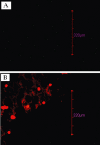Significant systemic and mucosal immune response induced on oral delivery of diphtheria toxoid using nano-bilosomes
- PMID: 21506959
- PMCID: PMC3188902
- DOI: 10.1111/j.1476-5381.2011.01452.x
Significant systemic and mucosal immune response induced on oral delivery of diphtheria toxoid using nano-bilosomes
Abstract
Background and purpose: Over the last decade apprehension has been growing over the effectiveness of existing parenteral vaccines for diphtheria and has created an interest in the development of a mucosally active vaccine. Oral immunization appears to be an effective alternative, but is not without the inherent disadvantages of antigen destruction and tolerance. Therefore, our objective was to investigate the incorporation of diphtheria toxoid (DTx) into bilosomes, which could provide protection as well as aid transmucosal uptake and subsequent immunization. Another objective was to determine the oral dose that will produce serum antibody titres comparable with those produced by i.m. doses of DTx.
Experimental approach: Bilosomes containing DTx were prepared by thin film hydration and characterized in vitro for their shape, size, percent antigen entrapment and stability. In the in vivo study the anti-DTx IgG and anti-DTx sIgA response was estimated using elisa, in serum and in various body secretions, respectively, following oral immunization with different doses of DTx entrapped in nano-bilosomes.
Key results: High dose loaded nano-bilosomes (DTxNB3, 2Lf) produced comparable anti-DTx IgG levels in serum to those induced by i.m. alum-adsorbed DTx (0.5Lf). In addition, all the nano-bilosomal preparations elicited a measurable anti-DTx sIgA response in mucosal secretion, whereas i.m. alum-adsorbed DTx (0.5Lf) was unable to elicit this response.
Conclusions and implications: The orally administered nano-bilosomal DTx formulation produced comparable serum antibody titres to i.m.alum-adsorbed DTx, at a fourfold higher dose and without the induction of tolerance. This approach will provide an effective and comprehensive immune protection against diphtheria with better patient compliance.
© 2011 The Authors. British Journal of Pharmacology © 2011 The British Pharmacological Society.
Figures





References
-
- Alpar HO, Eyles JE, Williamson ED, Somavarapu S. Intranasal vaccination against plague, tetanus and diphtheria. Adv Drug Deliv Rev. 2001;51:173–201. - PubMed
-
- Amidi M, Mastrobattista E, Jiskoot W, Hennink WE. Chitosan-based delivery systems for protein therapeutics and antigens. Adv Drug Deliver Rev. 2010;62:59–82. - PubMed
-
- Chen H, Torchilin V, Langer R. Lectin-bearing polymerized liposomes as potential oral vaccine carriers. Pharm Res. 1996;13:1378–1383. - PubMed
-
- Clark MA, Jepson MA, Hirst BH. Exploiting M cells for drug and vaccine delivery. Adv Drug Deliver Rev. 2001;50:81–106. - PubMed
-
- Clements CJ, Griffiths E. The global impact of vaccines containing aluminium adjuvants. Vaccine. 2002;20(Suppl 3):S24–S33. - PubMed
Publication types
MeSH terms
Substances
LinkOut - more resources
Full Text Sources

